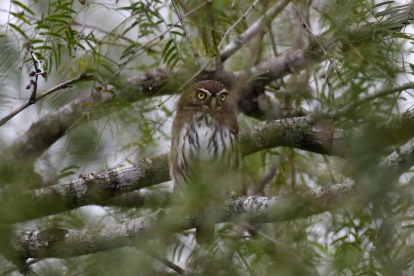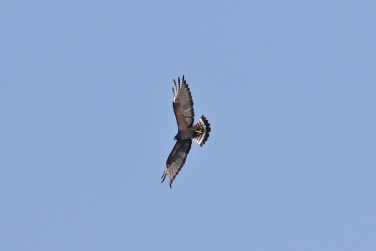My first impression of this valley came from flying into the small airport in Harlingen, a short hop from Houston’s larger hub. This is not a land of classic beauty, but rather a flat, hot, coastal plain with countless windmills, low level vegetation, and practically no tall trees. It’s a working class area of large farms and ranches, crisscrossed by straight highways, lined by strip malls and fast food oases. But it’s also an area steeped in history and fought for over the centuries by native Coahuiltecans, Spanish Conquistadors, Mexican, Texan, and United State’s armies.
The Rio Grande is the central geographic and historical feature bringing precious water 1900 miles from its source in Colorado, through New Mexico, and delineating the border between Mexico and Texas. But even that famous river underwhelms with first impressions when one sees a rather narrow and shallow stream winding its way through the fertile alluvial plain and wetlands, emptying into the Gulf of Mexico near the barrier islands of South Padre.
Even if my initial impressions were lukewarm, the birds and other fauna clearly love and thrive in this subtropical paradise with 520 avian species recorded. The meandering river and oxbow lakes create a lush, humid, riparian environment surrounded by the contrasting arid landscape. Its a land of yuccas, mesquite, Spanish moss, bromeliads and Sabal palms. Its also the home of one of the premier birding festivals in the country and the reason for my trip south this fall.
I felt a little smug seeing my first life bird at the gate area of the Houston airport, not realizing that there would be hundreds, no thousands, of Great-tailed Grackles in the parking lot of my motel all week. The night clerk gave me perhaps the best advice of the week–don’t head out into the wilds without a ample supply of fly dope and use it early and often.
The annual Lower Rio Grande Valley Birding Festival combines all the elements which make for a memorable week of birding. Visit their site at: www.rgvbf.org . One only has time to scratch the surface of the festival’s myriad of offerings including numerous guided tours of birding hotspots (all within 75 miles of the headquarters in Harlingen), lectures and demonstrations, and a chance to browse the latest books and salivate over that ultimate spotting scope. Throw in superb organization, excellent guides, a big Texas welcome and southern hospitality, and you have a great festival. Your only issue is choosing your trips–you can’t take them all.
My strategy was to reluctantly pass on the pelagic trip and the huge Laguna Atascosa NWR wetlands, thinking those would yield many of the same seabirds, shorebirds and waders already familiar to me from Florida and the Chesapeake Bay region. My first trip was to the mammoth and famous King Ranch, a 90 minute bus ride north of Harlingen. This is a working ranch, the size of Rhode Island, not usually open to the public, but available for guided tours. The main target bird here was the Ferruginous Pygmy Owl, an endangered species found only in south Texas and Arizona in the US. Our guide showed wonderful patience moving the busload of birders to potential sights before he finally heard the answering call in the deep underbrush. My photo reflects that, as the owl had no intention of showing off to the hoards of birders.
My next half day trip was another bus ride to the “Upper” Rio Grande in Starr County. There was some sudden excitement while the group birded along the river bank. You know you are seeing a “good” or unusual bird when the guides start shouting and pointing to a flyover. We were privileged to get a great look and even a decent picture of a Zone-tailed Hawk. The soaring raptors are always a special treat.
We then visited the home of a generous and interesting couple in Salineno that have converted their small backyard along the river into an avian fast food fly-thru with multiple feeders, bird baths, and even a theater of seats for weary birders, gladly adding their names to a huge guestbook. This gave us great looks at the White-winged and White-tipped Doves, the Altamira Oriole, Black-crested Titmouse, Golden-fronted Woodpecker, the ubiquitous and colorful Green Jay, and Orange-crowned Warbler and Long-billed Thrasher.
My last guided trip was to the Bentsen-Rio Grande Valley SP where I got some chuckles on the bus as I revealed I was yet to see a Plain Chachalaca. Just the name of the bird was fascinating, fitting its comical behavior and call. It indeed was present and common at Bentsen. The park is also noted for its tall platform above the treetops and hawk watch program.
In addition to the morning guided tours I used two free afternoons to visit Santa Ana NWR and Estero Llano SP alone. On the bus trips I had great opportunities to compare notes and equipment with birders from all around the country, but solitary walks along the quiet river, without the pressure to hurry and climb on and off the bus were a welcome break. That’s where I saw that Vermilion Flycatcher, and the huge Ringed Kingfisher.
Just at dusk while leaving Estero Llano, I saw a group of birders with guidebooks, smart phones, binoculars, and cameras ready, all standing near a large shrub next to the parking lot. There was a report of a Blue-throated Hummingbird here earlier that day–it’s a bird not usually seen this far East. The excitement grew when several hummers flew in, and there was a spirited debate whether they were Buff-bellied, Black-chinned, or Ruby-throated. The only consensus reached was they were not the coveted Blue-throated, but any posing hummer is a treat for me.
Five days along the Rio Grande is simply not enough time to absorb all this region has to offer. I added 29 birds to a modest life list, but in addition to the flora and fauna I discovered a need to know more about the region and its people and history. So on the flight home I plugged into Amazon, buying Giant, the 1952 novel about several generation of Texan ranchers by Pulitzer author Edna Ferber, Lone Star, A History of Texas and Texans, by T.R. Fehrenbach, and of course the Texas-sized historical novel Texas, by James Michener. This is more than enough reading to keep me busy until my next trip to the Rio Grande.


















Wow, what a bird-rich exploration!
LikeLiked by 1 person
Yes, I’ll second that. Thanks.
LikeLike
Steve, Great birds! Mary
Mary Revell Cell: 202-365-2314 marynrevell@gmail.com
>
LikeLiked by 1 person
Thanks. And new birds too, everyday.
LikeLike
Great shots! How lucky to get that beautiful Pygmy owl. The pics of the jays and the woodpecker are nice compositions. So there is a reason to visit Texas!
LikeLiked by 1 person
It has its own special appeal, very different for us Yankees, and the birds are phenomenal. Thanks for your comments.
LikeLike
Great pictures! I love the Amazon shopping spree on the way home 😉
LikeLiked by 1 person
As you know, birds & books are my weak link.
LikeLike
I love re-living the same trip you just went on. I myself was down at the same time you were.
LikeLiked by 1 person
Thanks. I’ll bet you’ll agree that it was a very worthwhile and well-run festival. It was my first trip to this bird-rich region.
LikeLike
You’ve managed to capture such exquisite birds. It must have been an awesome experience.
LikeLiked by 1 person
Thank you. If you ever get a chance it is well-worth a visit.
LikeLiked by 1 person
How I wish!
LikeLiked by 1 person